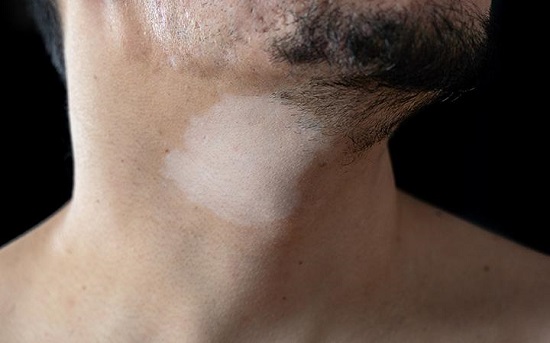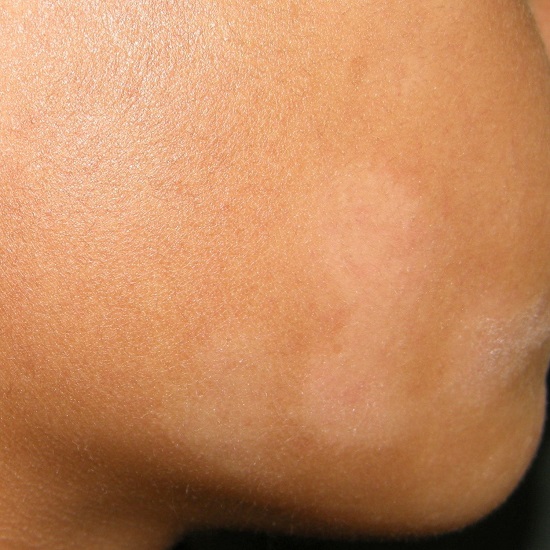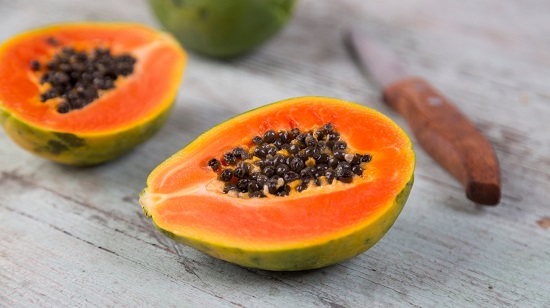Hypopigmentation can be a major cause of confidence issues for many people. Therefore, learn how to get rid of hypopigmentation below!
What is Hypopigmentation?
The color of your skin, hair, and eyes is determined by a pigment called melanin. Melanin is produced by skin cells known as melanocytes. Your skin can lighten if melanin is not produced in sufficient amounts. Hypopigmentation refers to patches of skin that are lighter than your overall skin tone.
These patches can occur in certain areas or involve the skin of your entire body. Hypopigmentation can be either due to a decrease in melanin or a decrease in melanocytes themselves. The condition can be congenital or develop later in life. However, it is more pronounced in people with darker skin.
Causes
Reasons for hypopigmentation are varied. It can develop as a result of an injury or trauma to the skin. Hypopigmentation can be a result of burns, blisters, cuts, and even infections. Certain diseases like lichen sclerosis and leprosy, and improperly done cosmetic procedures like laser and chemical peels can all cause hypopigmentation. Other reasons or causes of hypopigmentation include:
- Nutritional deficiency of vitamin B12, copper, or iron
- Using cosmetics containing bleaching agents
- Certain medications
- Inflammatory diseases like atopic dermatitis
- Cancer
Types of Hypopigmentation
1. Albinism
Albinism is an inherited condition that occurs because of a defective gene. The skin cells of people having this condition cannot produce melanin, and their skin and hair remain white, and the irises of their eyes also contain very little melanin.
2. Vitiligo
Vitiligo is another type of hypopigmentation in which smooth, white patches of skin develop over regions like the arms and face or may cover the entire body. These patches can sometimes be seen on the inside of the mouth and in the hair. It may be due to an autoimmune disorder and is a chronic condition with no permanent cure.
3. Pityriasis Alba
Pityriasis alba is the occurrence of white, raised patches on the face. It is most commonly seen in children with dark skin and is thought to be associated with eczema.
Treatment of Hypopigmentation
Hypopigmentation does not cause any significant health problems or affect everyday life in any way. It does, however, affect the self-confidence of the person. Hypopigmentation, which results due to injury usually resolves on its own over some time as the injury heals.
Most people do not seek treatment for hypopigmentation as it causes no problems or discomfort, but a cosmetic issue. Albinism has no cure as the defect lies in the genes. However, people with albinism are at greater risk of skin cancer and must avoid direct exposure to sunlight.
Their eyes are also sensitive, and they need eye protection when venturing out. Hypopigmentation due to Pityriasis alba also requires no treatment as the patches sometimes disappear on their own.
Treatment depends on the underlying cause. Topical corticosteroid creams, laser therapy, and light therapy help reduce the appearance of hypopigmentation. It is advisable to wear sunscreen on the lighter patches of skin as they can burn quickly when exposed to direct sunlight. Using concealers is a makeup technique to hide the patches. Intense pulse light treatment, chemical peels, and microdermabrasion are medical treatments for hypopigmentation.
How To Get Rid of Hypopigmentation
1. Ginger
Ginger is supposed to be an effective remedy for hypopigmentation as it has antioxidants and anti-inflammatory properties. Grate some ginger root and apply it to the affected area. Repeat twice a day for faster results.
2. Turmeric Powder
You can apply a paste of 5 teaspoons of turmeric powder with mustard oil on the affected skin twice a day for positive results within a year.
3. Bakuchi Seeds and Coconut Oil
A paste made of bakuchi seeds powder in coconut oil is another effective remedy. Coconut oil has anti-inflammatory properties and encourages the production of new pigment.
4. Copper, Ginger, and Aloe Vera
Getting copper into your system by eating food or drinking water stored in copper pots promotes melanin production. Red clay also contains copper. You can mix it with ginger juice and apply it. Regular application of aloe vera gel is another effective remedy.
5. Papaya
Rub pieces of papaya on the affected areas and leave them on till dry before washing them off. You can apply a mixture of lime juice and basil juice to the affected skin.
6. Walnuts
Eating walnuts or using a paste of walnut powder with water to the affected skin 3 to 4 times daily can show results.
When To See A Doctor
You can seek medical advice if:
- Other systemic symptoms accompany hypopigmentation.
- There is no improvement after using home remedies.
- Or if the patches spread.
However, to get a proper diagnosis and start early treatment, it is always better to get a doctor to see any new patch of discolored skin.





